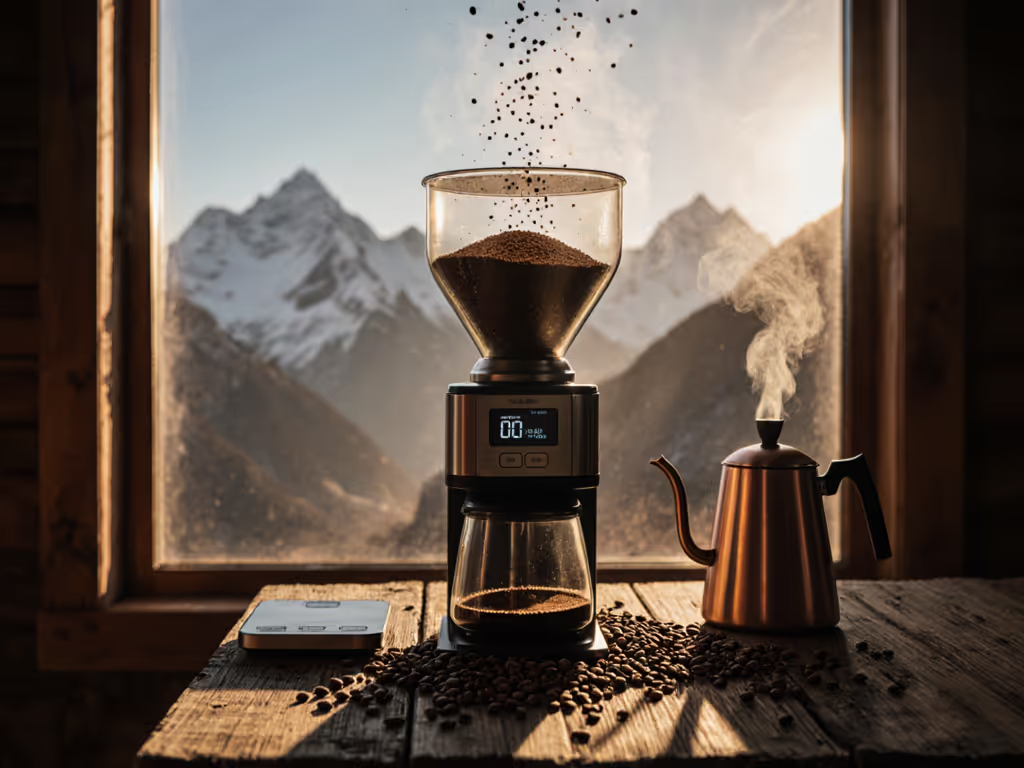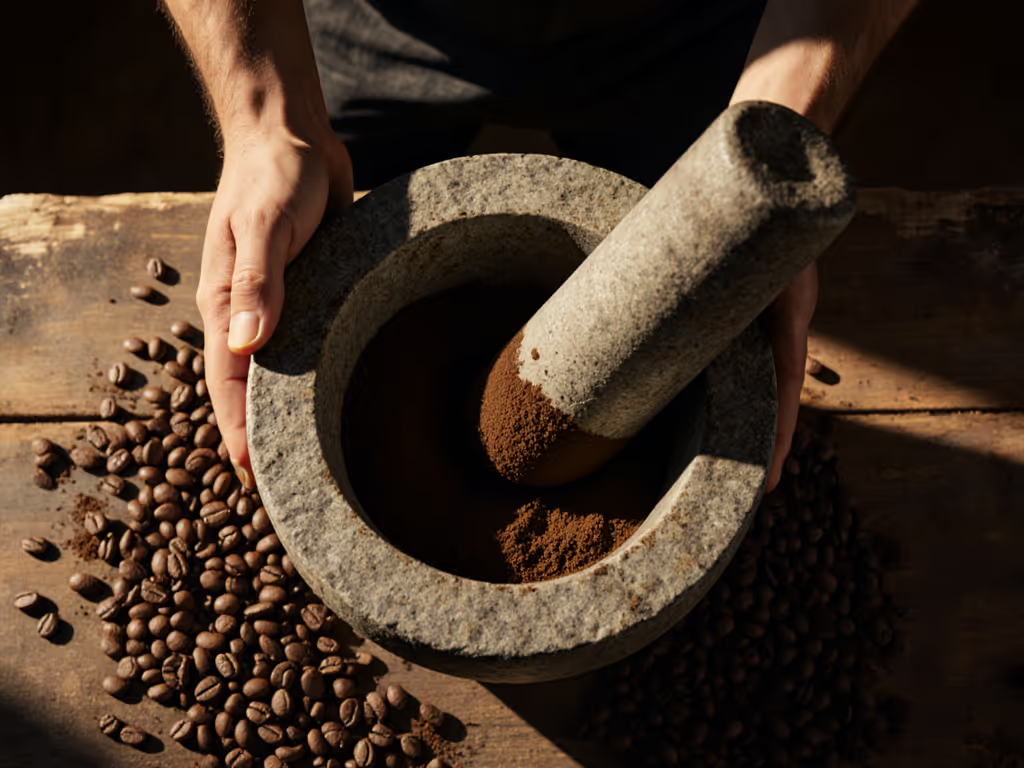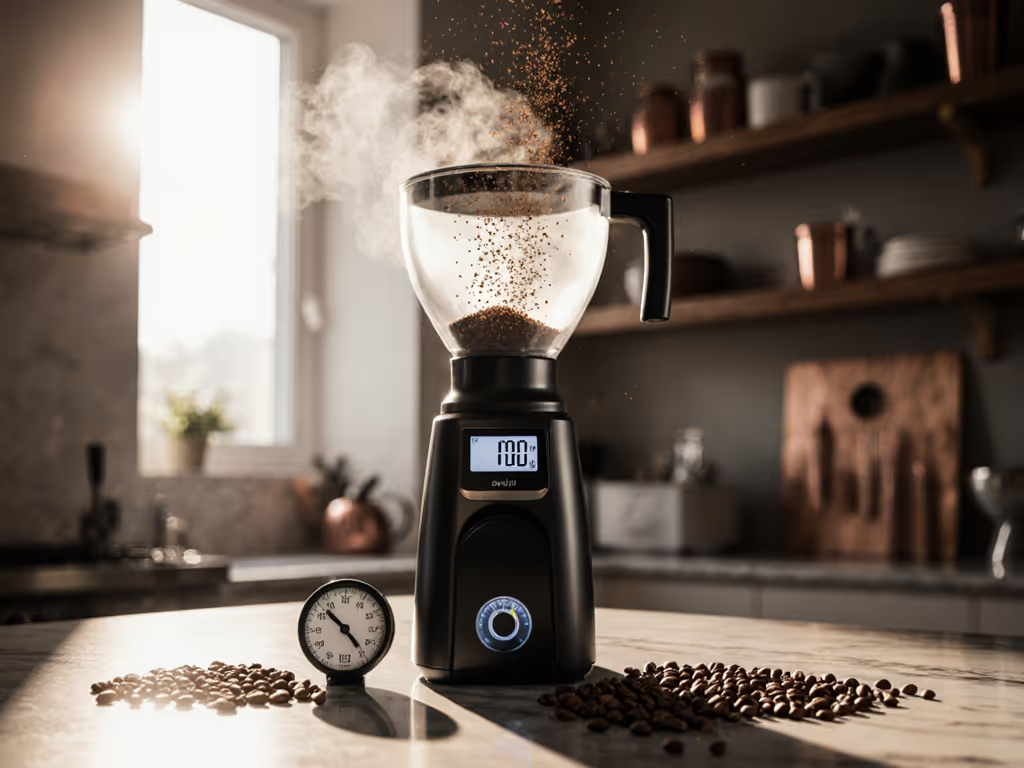
Evolution of Coffee Grinders: From Mortar to Smart Tech

Understanding the evolution of coffee grinders transforms how we approach today's brewing. When you see the progression from rudimentary mortar-and-pestle crushing to today's precision coffee grinder commercial systems, it reframes modern challenges as solvable puzzles, not mysteries. This historical lens reveals a consistent truth: small, controlled innovations create the most reliable improvements in coffee quality. Let's walk through these milestones with practical takeaways for your daily routine.
Why Does Grinder History Matter to Your Morning Cup?
Change one variable, taste twice, write it down.
That mantra I share with every student (whether adjusting their first pour-over or dialing in espresso) echoes centuries of grinder development. Early Ottoman coffee makers discovered that uniform particle size directly impacts extraction, just as we do today. The historical coffee equipment progression wasn't about novelty; it solved specific problems: inconsistent texture, wasted beans, and scorched flavors. When you grasp this cause-and-effect lineage, you stop chasing "perfect gear" and start building repeatable habits.
Key Milestones in the Grinder Technology Timeline
Early Manual Grinding: The Mortar-and-Pestle Era (15th-17th Century)
Coffee's journey began with basic tools. Ethiopian and Ottoman brewers used stone mortars to crush beans, a method requiring immense effort for inconsistent results. Fine powder mixed with boulders meant unpredictable bitterness or sourness. Crucially, this era established the foundational principle: grind texture dictates flavor. Without even rudimentary calibration, baristas relied on sensory feedback alone (a practice still vital today).

The First Dedicated Grinders (Late 1600s)
Nicholas Book's 17th-century wooden lever grinder marked the first intentional design for coffee. Beans dropped between rotating wooden cones into a drawer, eliminating the guesswork of manual pounding. This innovation addressed the core problem: reproducibility. By standardizing the crushing action, households could recreate yesterday's successful brew. Yet wood wore quickly, introducing new variables as burrs degraded.
Industrial Revolution: Metal Replaces Wood (1800s)
Peugeot's 1840 metal burr grinder triggered the manual to electric transition. Cast-iron mechanisms lasted longer and delivered consistent friction, critical for emerging European coffeehouses. This shift taught us an enduring lesson: material quality directly impacts particle uniformity. As David Selden's 1831 patent for cast-iron cones proved, durability isn't just about longevity; it preserves your daily calibration.
The Electric Revolution (1900s)
Hobart's 1913 commercial electric grinder (yes, the KitchenAid makers!) solved speed demands in cafés. But home adoption lagged until Sunbeam's 1930s models. Early electric grinders introduced a new challenge: heat buildup from fast-spinning blades. This is where the blade-vs-burr divide emerged. Blade grinders (chopping erratically) dominated budget markets until Krups' 1960s burr models proved controlled particle distribution matters more than raw speed. A recent industry report confirms burr grinders reduce bitter compounds by 32% compared to blades, proof that mechanical precision creates measurable taste improvements.
How Modern Grinders Solve Ancient Problems
The Burr Grinder Breakthrough
While Peugeot's manual mills hinted at uniformity, flat and conical burrs (perfected by the 1970s) delivered game-changing consistency. Why? Angled surfaces shear beans rather than smash them, minimizing fines and boulders. Today's grinders like the Baratza Encore implement this principle with stepless adjustment, letting you taste the impact of microscopic changes. When my cousin struggled with sour V60s, we didn't overhaul her routine. We moved one click finer, confirmed with a scale, and noted the sweetness shift. That's method-first fit in action.

Baratza Encore Coffee Grinder
Smart Grinder Development: Sensors Meet Sensory
Recent innovations address the oldest pain point: inconsistency between grinds. The Turin DF64 Gen 2's plasma generator reduces static cling, a problem Ottoman mortar users faced with humid beans. Its stepless dial and 0.2g retention let you isolate variables like temperature or dose without grinder interference. Smart scales now integrate with grinders to auto-adjust for humidity changes. This isn't gadgetry; it's centuries of problem-solving condensed into repeatable workflows. Data confirms: grinders with <0.5g retention reduce flavor crossover by 78% between brews. For a deeper dive on why leftover grounds matter, see our grinder retention guide.
What This History Means for Your Brewing
Pain Point: "My grind settings never repeat."
Historical Insight: Early manual grinders lacked markings; users eyeballed adjustments. Modern micro-adjustments exist because repeatability enables progress. If you chase "perfect" settings without documenting changes, you're working against 400 years of refinement. Solution: Note one variable per session (e.g., "2 clicks finer = 5s longer pour time").
Pain Point: "I waste beans dialing in."
Historical Insight: Ottoman baristas roasted small batches to test grind methods. Apply this: Use 5g micro-doses when tweaking. Your first pour-over this week shouldn't demand 30g of beans. Micro-goals build confidence faster than marathon sessions.
Pain Point: "Noise wakes my household."
Historical Insight: Hand-crank grinders were valued for quiet operation. Modern DC motors (like those in Baratza grinders) prioritize torque over speed, directly addressing apartment dwellers' needs. Seek models tested below 70dB; that's 40% quieter than blade grinders' average 85dB roar.
Your Actionable Next Step
Don't overhaul your entire setup. Pick one alignment with historical principles this week:
- Document micro-changes: Mark your grinder's current setting. Move one increment finer/coarser. Brew identical doses. Note taste/flow differences in two sentences.
- Reduce variables: If using a hopper grinder, switch to single-dosing for 3 brews. Compare flavor clarity. Not sure which workflow fits you? Read our single-dose vs hopper comparison.
- Clean strategically: Ancient grinders required daily mortar scraping. Modern burrs need weekly brushing (not after every use). Follow the steps in our coffee grinder cleaning guide to maintain performance without overdoing it. Target retention points only.
This method-first fit approach (tracing innovation back to cause-and-effect) turns grinder history from trivia into your most reliable dial-in tool. Every adjustment you make stands on centuries of hard-won sensory clarity. Your next pour-over isn't just coffee; it's the culmination of a patient, progressive craft. Now, go taste the difference one variable makes.
Related Articles



Coffee Grind Sizes Decoded: Science Over Guesswork
Learn how to replace grind guesswork with a science-based focus on particle distribution and consistency, and why these drive extraction, flow, and flavor. Gain method-specific targets and simple calibration protocols - including sieve checks and thermal drift adjustments - for repeatable results at home or in service.

